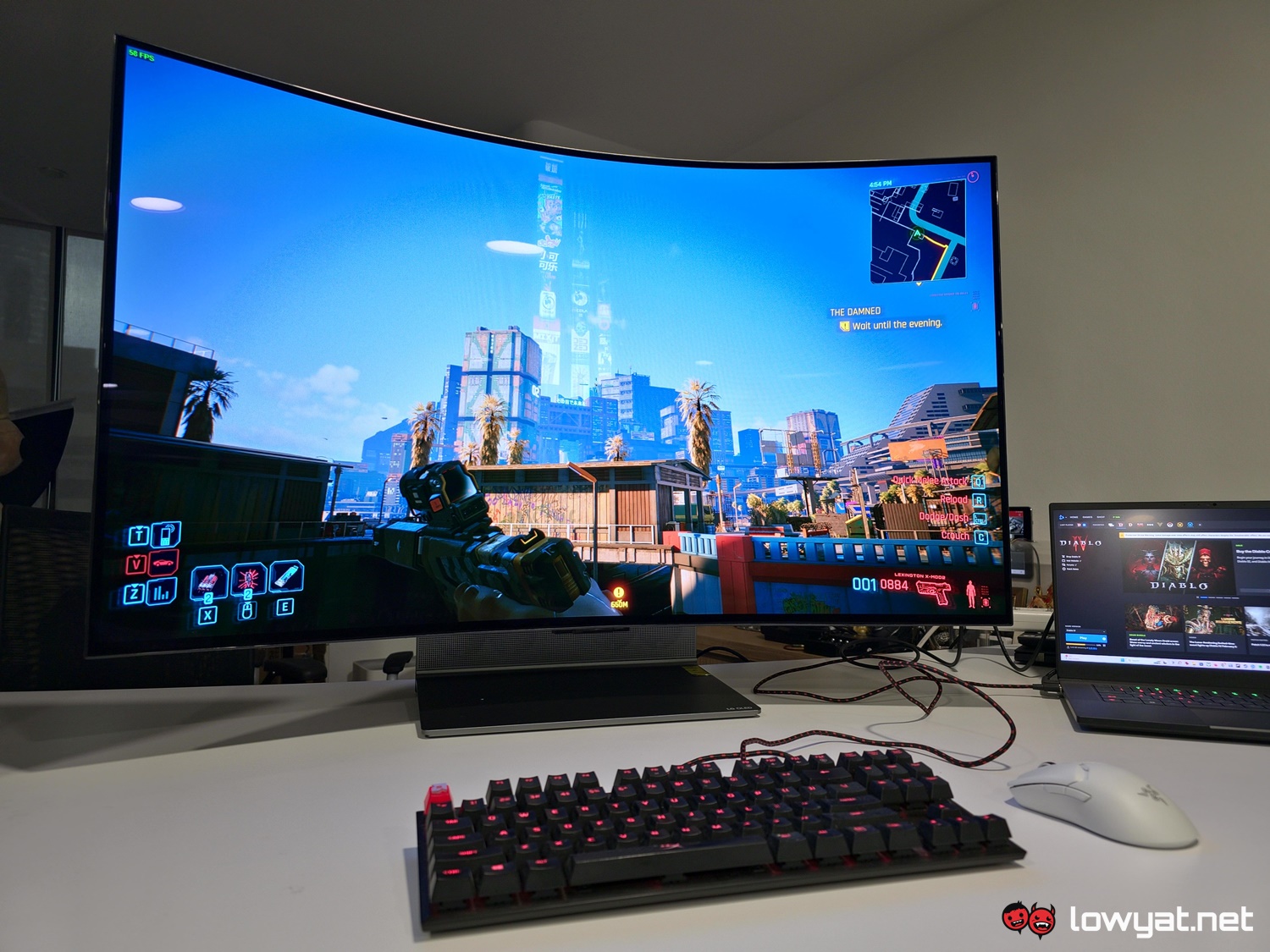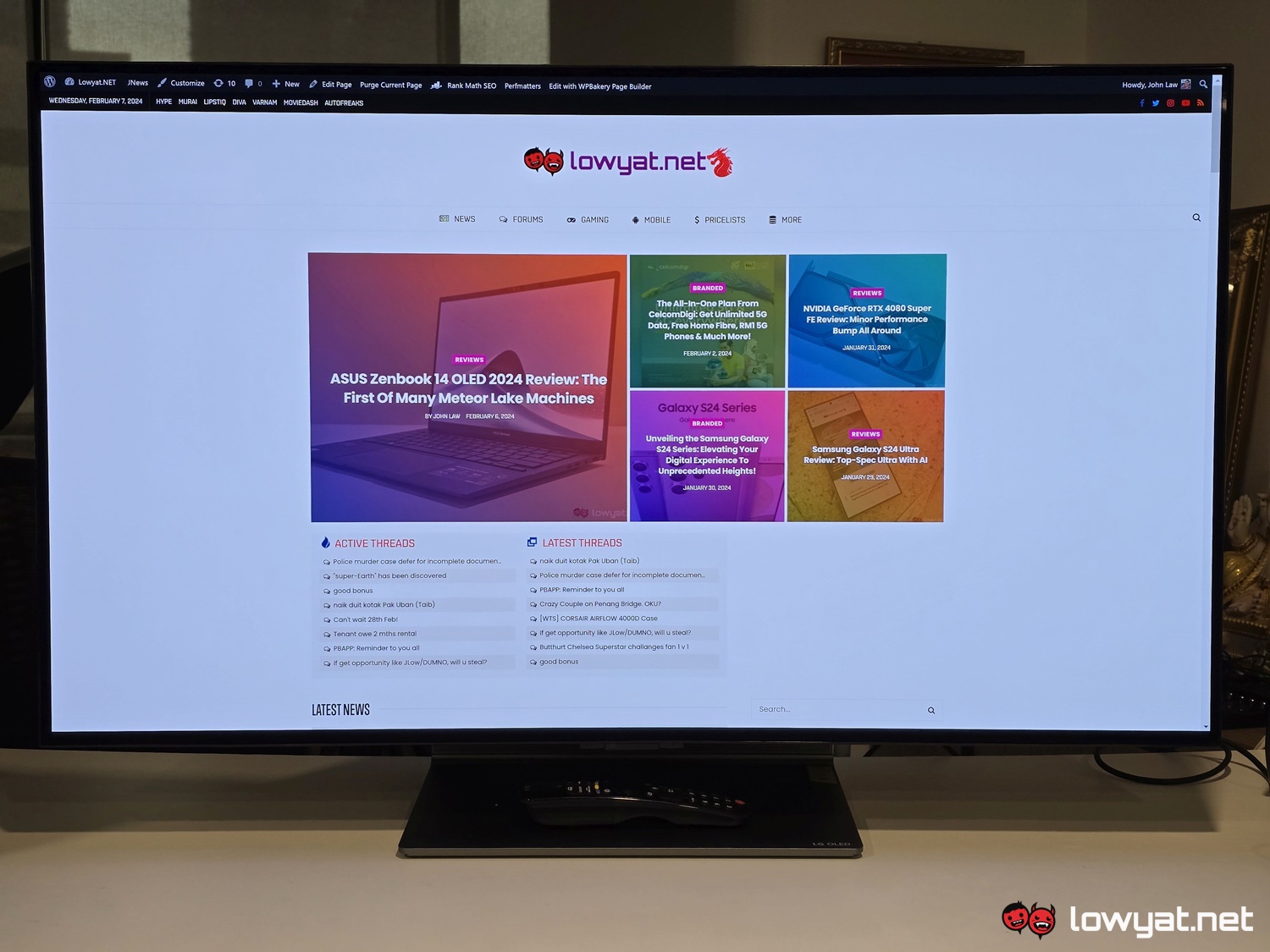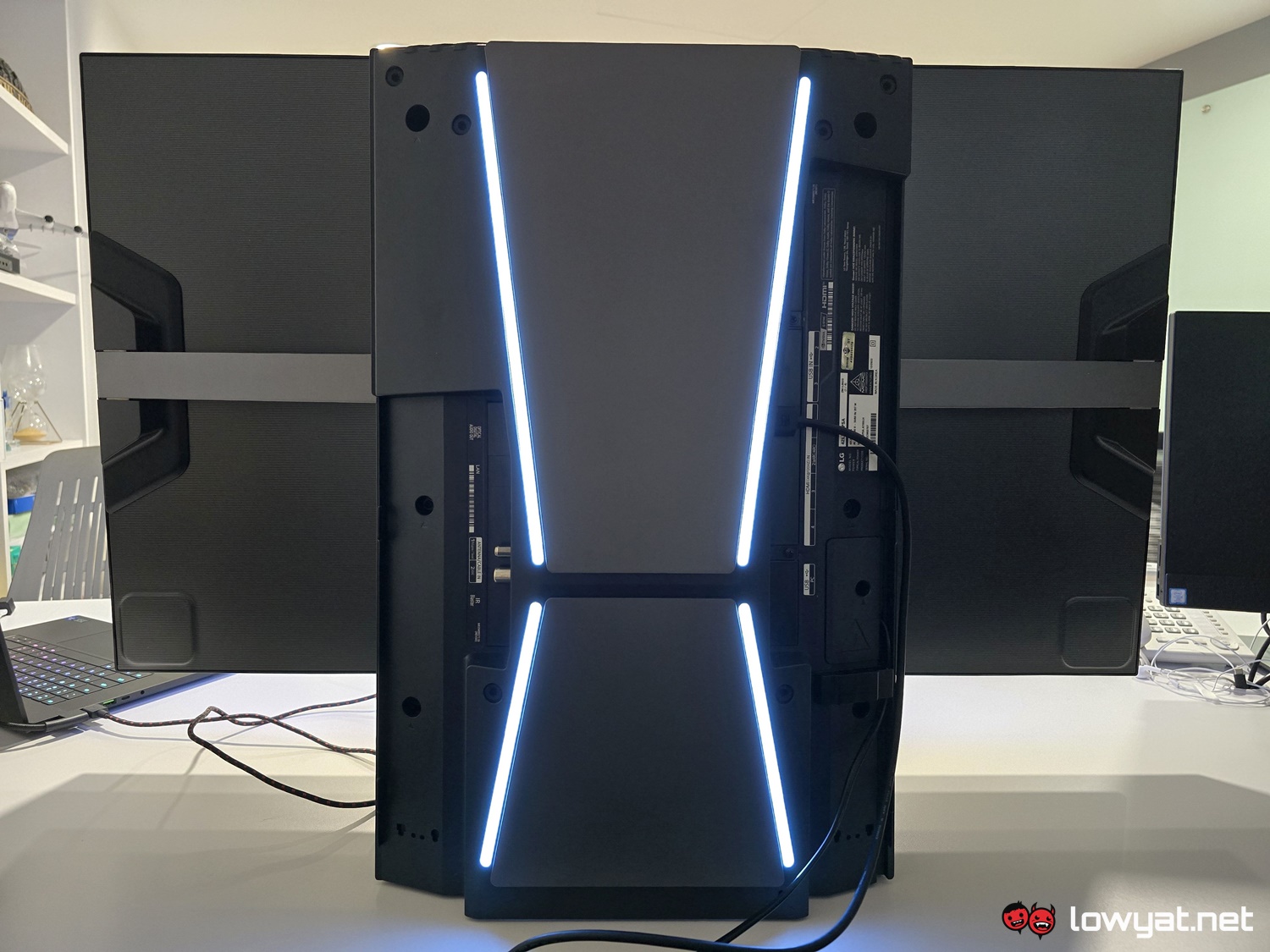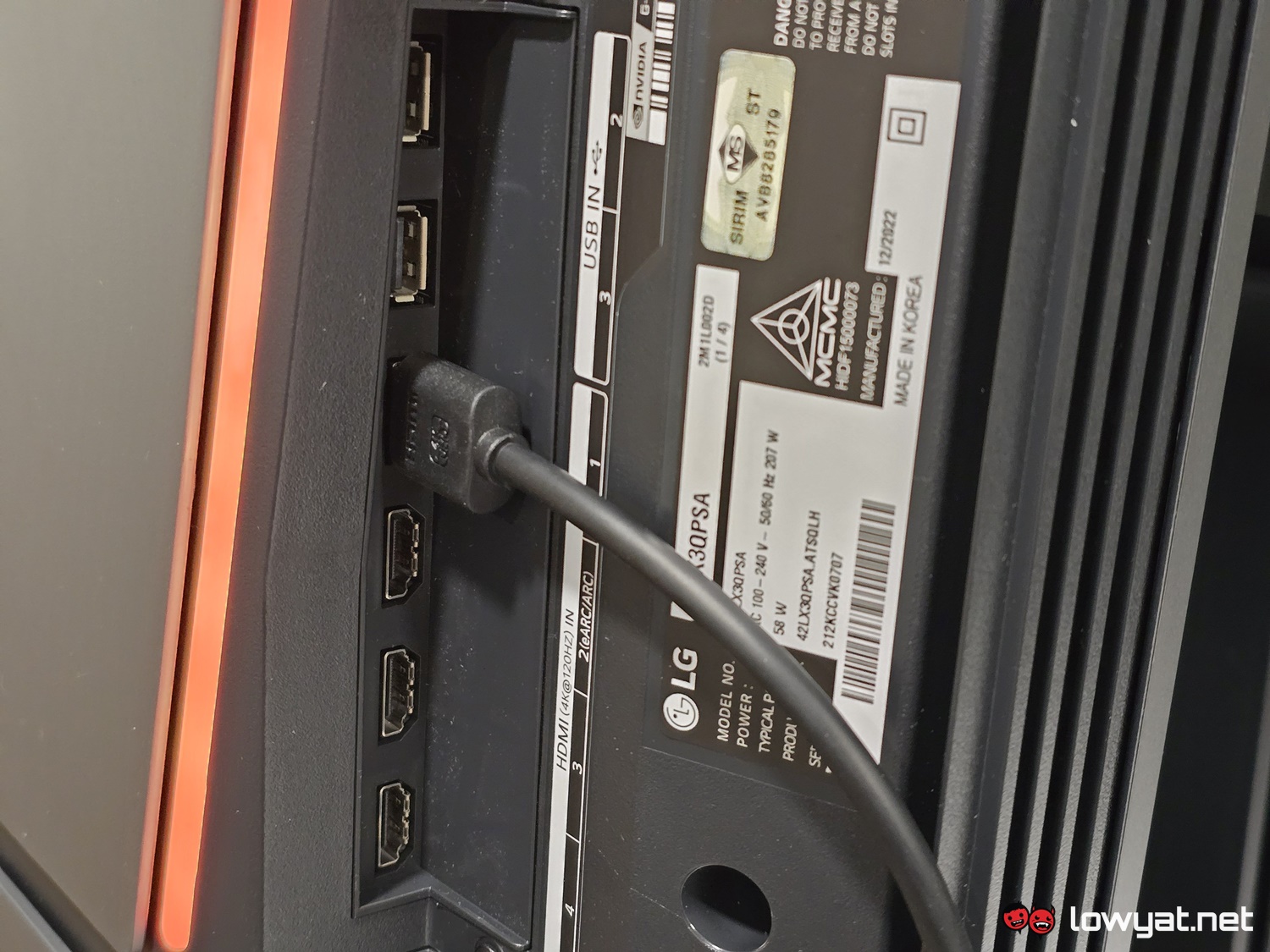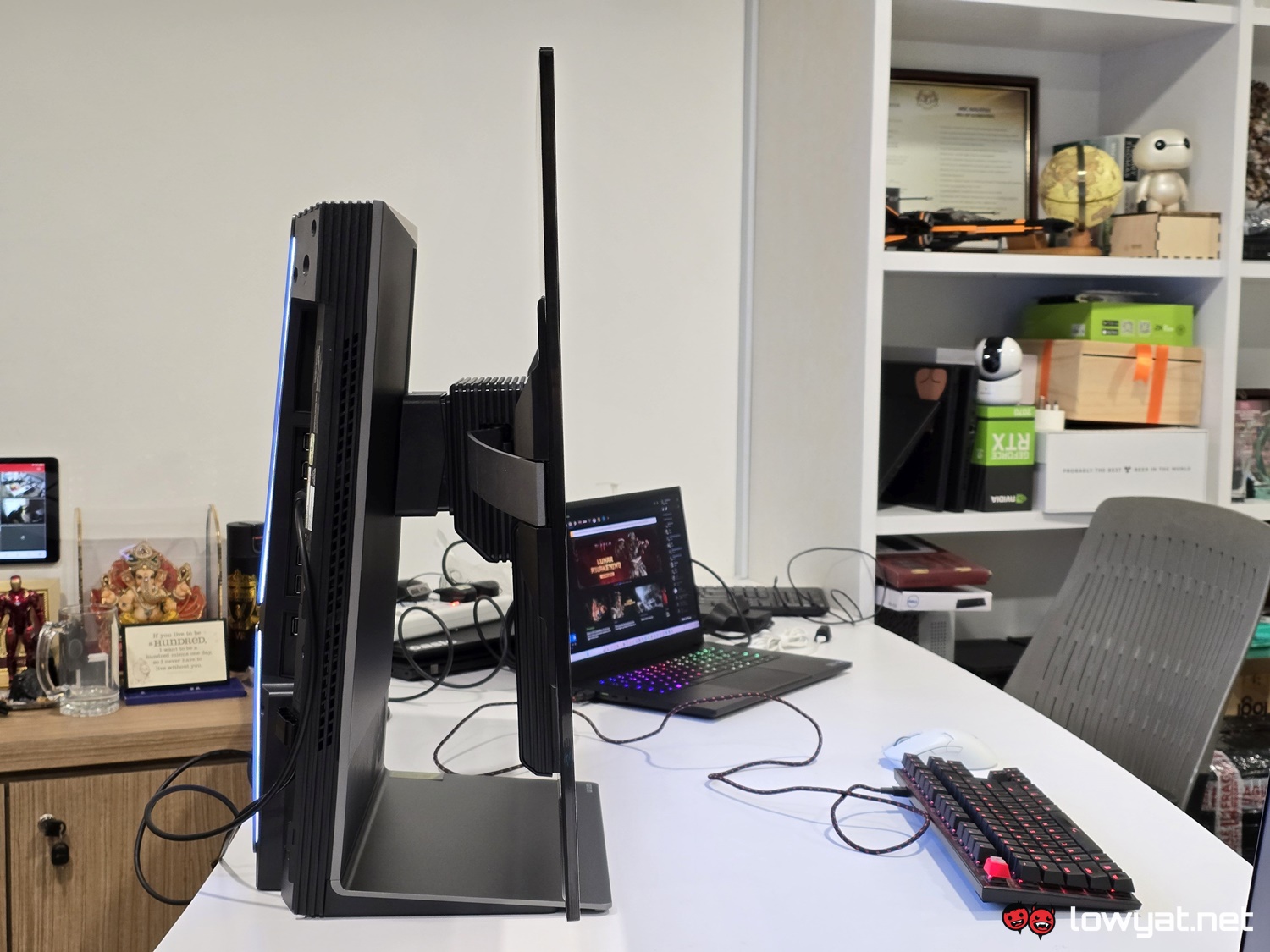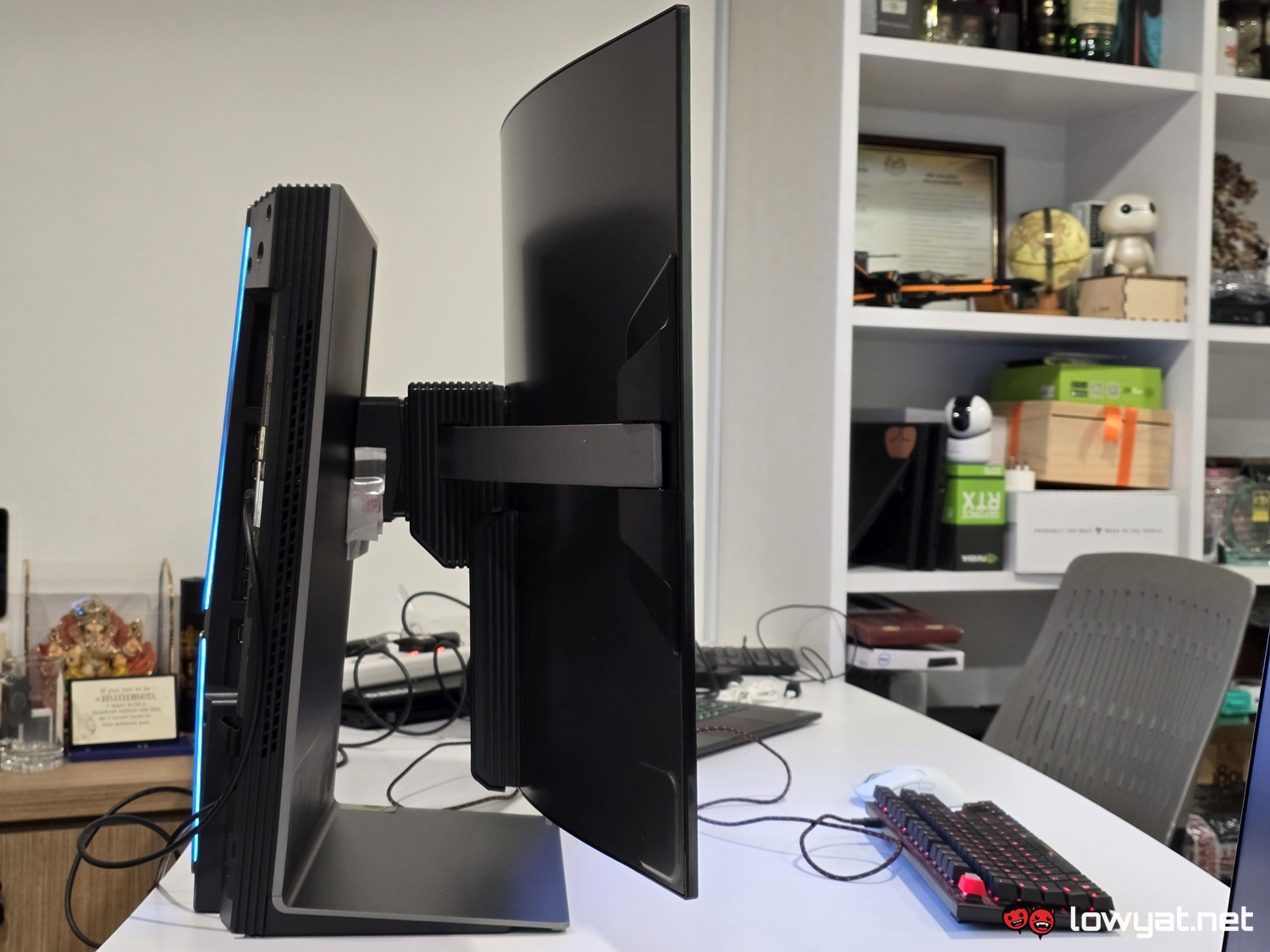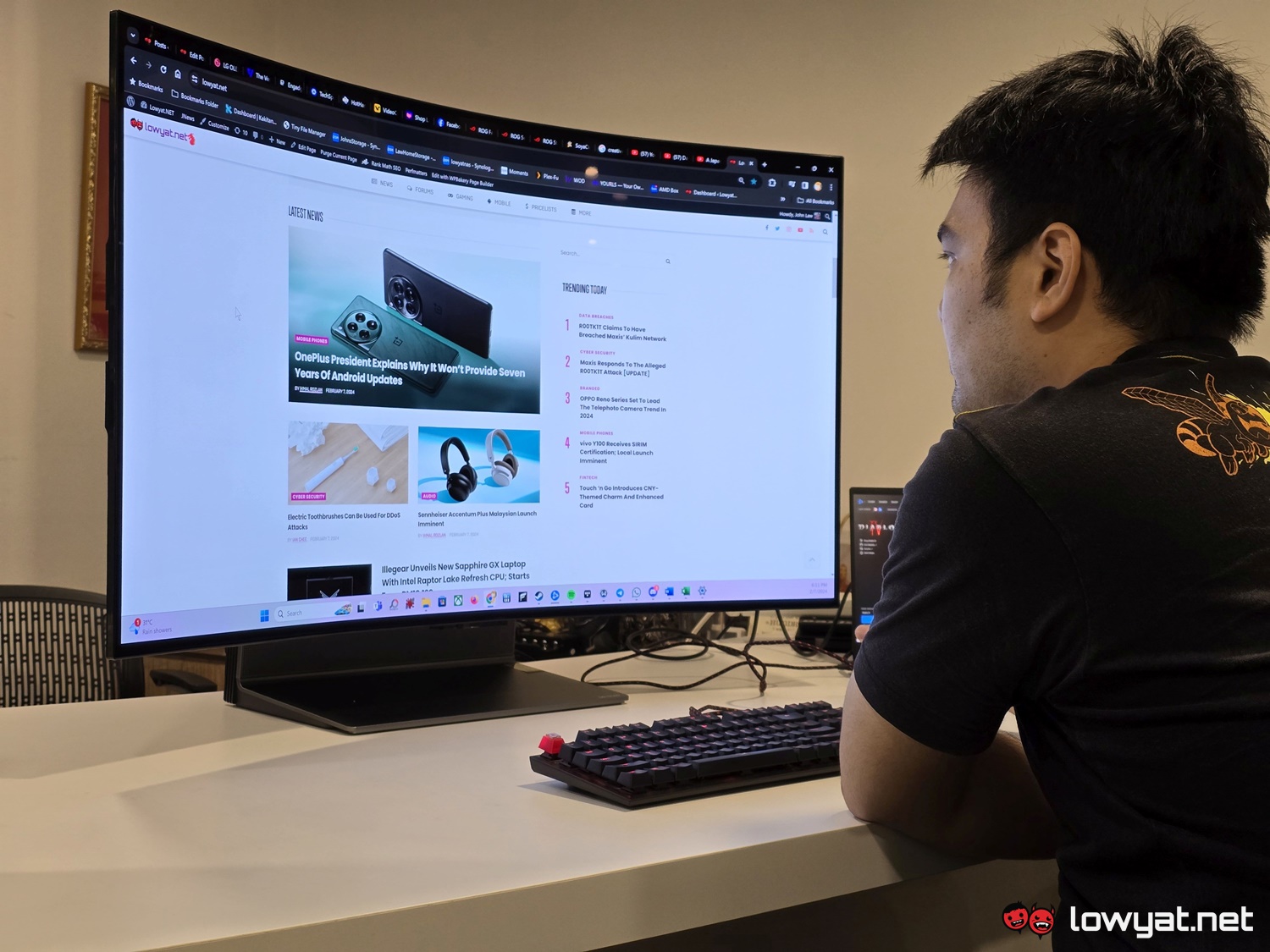The LG OLED Flex is one of those TVs that offers a little of everything on the current market. It paints itself as a moderately-sized TV with all the trappings that an OLED panel has to offer you, while also trying to offer you the best of both worlds.
This review comes a little late but considering what is being offered by LG here, I thought I’d take a look at what the Korean electronics and appliances brand is touting as the world’s first bendable 42-inch OLED TV and see what the fuss is all about.
What Am I Looking At?
So, if it wasn’t already obvious, the LG OLED Flex is a 4K TV that, as the “Flex” in its title implies, can switch between being a typically flat panel entertainment machine, to a curved gaming TV of varying curvature, providing a more intimate and immersive gaming experience to the consumer. The TV has a heavy single-plate base which also doubles as the anchor and foot for its spine.
On that note, the spine of the OLED Flex also houses the motor that allows it to transform the display into a curved panel. By default, you’ll be able to choose between the full 900R curvature or half that, but it can be customised via onboard software. You can also adjust the height and tilt of the display, just as you would with a gaming monitor.
The OLED Flex is also loaded with a fair number of creature comforts, ranging from a built-in microphone, RGB strips in the back, a remote control, as well as 40W speakers that can be enhanced with the onboard AI software. Ports-wise, you’re looking at four HDMI 2.1 ports that support 4K120Hz, with one port also supporting eARC. Besides the remote control, you can also gain access to the TV via the nipple-style joystick, located smack in the centre bottom.
What’s Good About It?
As with the majority of TVs with OLED panels, the OLED Flex features individual dimming zones, which simply translates into a display with uniform brightness without one pixel’s lighting encroaching into the territory of another. Another benefit to OLED is that blacks are inky and deep, while whites can seem like you’re looking into God’s waiting room. Colours are punchy and vivid and combine all that with HDR, and what you get is quite literally eye-candy. Oh, and it’s also an Adaptive Sync TV, meaning that it supports both AMD’s Freesync and NVIDIA’s G-SYNC anti-screen tearing technology.
Beyond that, the OLED Flex comes loaded with the usual software features one would expect from a TV or monitor, including the ability to choose the picture mode, which HDMI port you’re connected to, and if you’re subscribed to Astro, have it seamlessly connected to the set top box. And yes, it does connect to the internet.
Another benefit of an OLED panel is that, even at close distances, my eyes don’t hurt although because it doesn’t have the same pixel density as a bonafide gaming monitor, they also tend to drift off across the screen at times, with me literally trying to focus my sights on a piece of text located at the top of this 42-inch TV.
What’s The Catch?
I think now would be a good time to remind you, dear readers, that this is a TV, and not a gaming monitor. To that end, and for all the gaming-related trimmings that it possesses, this is far from the most energy-efficient display that you’ll ever use, with an energy rating of just 3-stars.
Moving on, while the auto-curvature does help a little bit with the overall immersion when gaming. its function and ability to go from a flat panel to curvy is still just a novelty. At the end of the day, it’s more a TV for the couch and console gamer, rather than something you want to plonk on top of a desktop to serve as a replacement for your already old and ailing gaming monitor.
Moving on, unless you have the requisite HDMI cables that support 4K120Hz, getting the OLED Flex to run at its maximum advertised resolution and refresh rate is going to be a hassle and a half. Believe me, I tried. The highest refresh rate I managed to get on the TV was 60Hz at 4K; anything higher than that and the TV would automatically just drop its signal and connection to the source (i.e my laptop).
While the speakers on the OLED Flex are certainly powerful, they are sadly far from full and ample. Like the majority of TVs, the highs and mids of the TV overwhelm the almost non-existent lows. It doesn’t help that the onboard AI Sound Pro has a tendency mixing said highs and mids to sound really blown out, even at low volumes but worst still, turning off also means that you’re going to be cranking up the volume on it. Also, this isn’t a Google TV.
Should I Buy It?
The LG OLED Flex is a display with something of an identity crisis. On the one hand. it wants to be a TV for all to enjoy but when its curvature comes into play, it starts to become less group-friendly and more of a “me time” display. On the other hand, it also wants to be placed on the desktop, where it hopes its curves will give it some mad PC gaming credentials but honestly, this feels more like a console-friendly gaming TV, instead of the former. That, and the fact that it doesn’t have any support for DisplayPort.
As far as image quality goes, though, the OLED Flex does not fail to deliver in that department. So, if you’re not deterred or you do not share in the several pain points that I have covered in this review, then there is little reason for you not to consider purchasing this TV. Assuming, of course, that you’re willing to pay the RM13,199 premium it commands.
Follow us on Instagram, Facebook, Twitter or Telegram for more updates and breaking news.

